The perhaps inevitable and eminently predictable departure of Vitali Kravtsov to the Kontinental Hockey League last month, which put an apparent end to the enigmatic forward’s strange and stilted NHL tenure, provided a stark reminder of the two consecutive NHL Drafts that are now costing the New York Rangers dearly.
No, Kravtsov was no longer a Blueshirt when he headed home to play on a two-year contract with his former team, Traktor Chelyabinsk, having been mercifully traded to the Vancouver Canucks for a seventh-round pick in 2026 and forward Will Lockwood on Feb. 25. The conclusion of his long and winding path through North American hockey, however, returned the spotlight to his original team and how its misses on a pair of top-10 draft picks continue to reverberate through the Rangers’ roster.
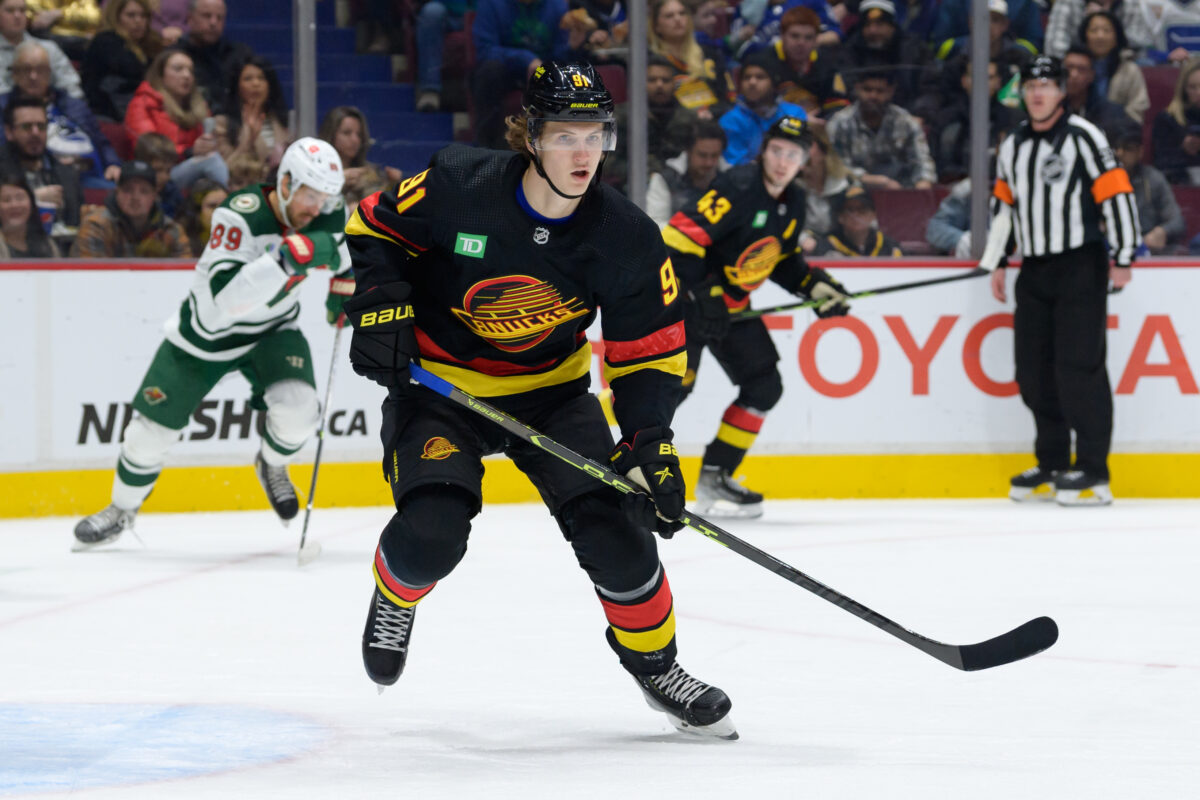
Those occurred in 2017 and 2018, when team management reached on two players that weren’t viewed with nearly the same regard around the league that the Blueshirts had for them. The painful result is the Rangers being left with little to show for those opportunities – and a roster that isn’t nearly as good as it could have been had the front office pursued a more sound approach to those high draft choices.
Every team misfires in the draft, of course. In both of the years in question, however, former general manager Jeff Gorton seemed to employ questionable decision-making with two prime picks that have long been considered busts despite the relatively short time since being selected by the Blueshirts.
Rangers’ Selection of Andersson Was Flawed From the Start
It’s fair to say anticipation was heightened for the Rangers inside Chicago’s United Center on June 23, 2017. The club possessed a first-round pick for the first time since 2012; in fact, it had two by virtue of a trade with the Arizona Coyotes that brought back what ended up being the seventh overall selection along with Tony DeAngelo for Derek Stepan and Antti Raanta. With that pick and their own first (more on that later), Gorton had a chance to add high-ceilinged prospects that hadn’t been available to the Blueshirts through the draft for five years.
The Rangers, though, weren’t picking high enough to grab the elite talent that year. Interested in University of Massachusetts defenseman Cale Makar, Gorton watched him fall to fourth, where he was snapped up by the Colorado Avalanche. Three spots later, the Rangers took Swedish center Lias Andersson.
The pick immediately raised eyebrows. Andersson wasn’t viewed as possessing great skating ability or puck skills, but the Rangers supposedly saw a player with burgeoning leadership skills who was among the most “NHL-ready” prospects in the draft.
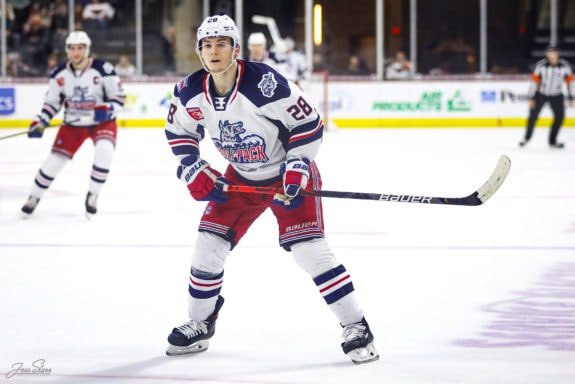
That all seems like a punchline now. Red flags started flying almost immediately when Andersson, serving as Team Sweden’s captain in the 2018 World Junior Championships, threw his silver medal into the crowd in a bizarre move following a loss to Canada in the gold-medal game.
Over the next two-plus years, Andersson would prove to be anything but NHL-ready, or a leader: Sullen, immature and admittedly homesick, he produced little in 66 games with the Rangers. He requested a trade, left the organization without permission and was suspended, was loaned back to his Swedish Hockey League team and then mercifully traded to the Los Angeles Kings at the 2020 draft for a second-round pick (which became forward Will Cuylle, who does have a chance to salvage the episode for the Rangers). Just 24, Andersson has been toiling in the Kings’ system, playing mostly in the American Hockey League while making it into 44 games with the Kings.
Blueshirts Took Andersson Over Necas, Suzuki, Mittelstadt
So who did the Rangers miss out on by going with Andersson? Center Casey Mittelstadt, who went one spot later to the Buffalo Sabres, recorded 15 goals and 44 assists in playing all 82 games last season and showed signs of finally being able to put it all together.
The real teeth-gnashers in that range, however, have proven to be Martin Necas and Nick Suzuki, centers who were picked 12th and 13th by the Carolina Hurricanes and Vegas Golden Knights (who traded Suzuki to the Montreal Canadiens in September 2018), respectively. Necas broke out for 71 points in 82 games in 2022-23, while Suzuki has delivered back-to-back 60-plus point seasons and was named the Habs’ captain in September 2022.
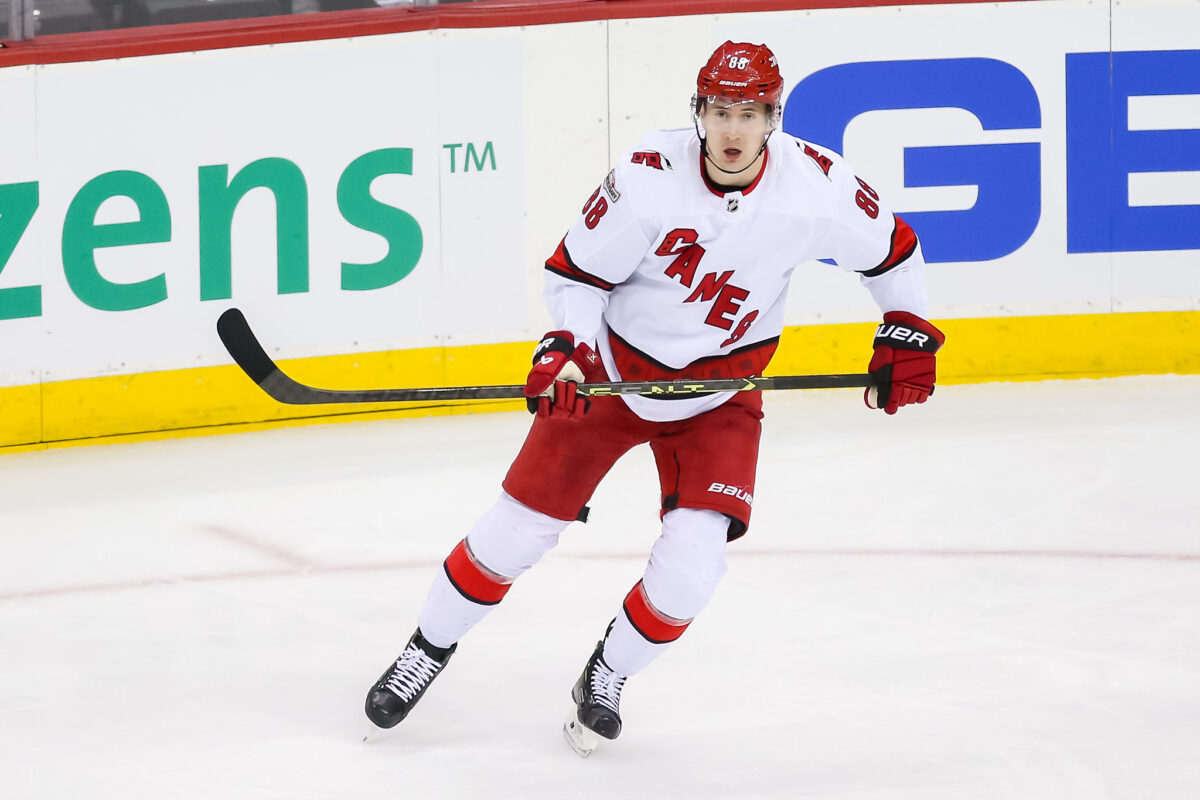
What would the Rangers look like today had they selected one of those players instead of Andersson? Perhaps Suzuki, whose leadership skills and production match what Gorton was looking for in Andersson, would be wearing the “C” at Madison Square Garden. Necas looks like a budding star who’s likely to hold down a top-six spot in the middle for the Hurricanes for years to come.
The 2017 first round ended up not being a total loss for the Blueshirts, as they took center Filip Chytil with their own pick, 21st overall. Chytil also appears to be on the verge of making a big leap after a career-best 45-point season. His development had been halting up until 2022-23, however, and the Rangers, under new general manager Chris Drury, felt they lacked proven depth down the middle and signed veteran Vincent Trocheck to a seven-year contract last summer.
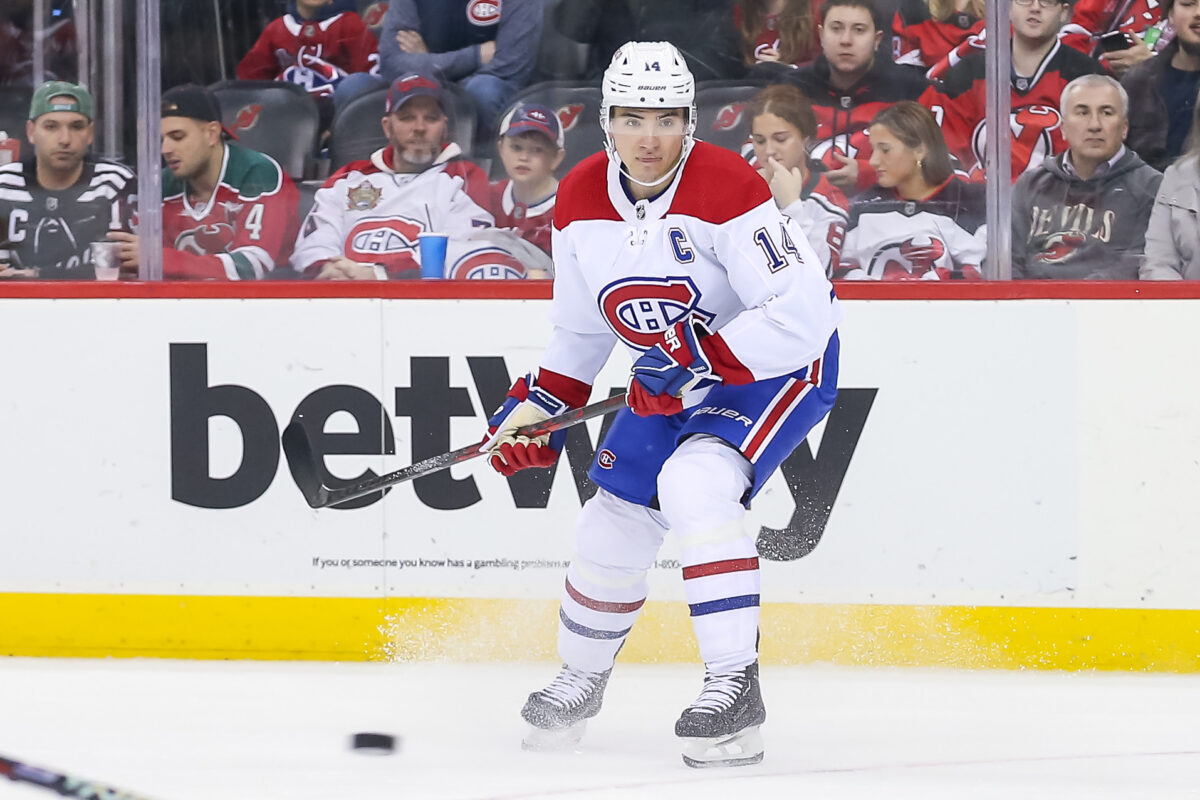
Trocheck had a good first season with the Blueshirts, totaling 64 points in 82 games, but he turns 30 in July and is locked in for the long term on a deal that isn’t likely to age well. Had the Rangers taken Necas or Suzuki, and they developed as they did with their current teams, the Blueshirts likely wouldn’t have signed Trocheck. Instead, they’d have Chytil and another rising early-20 something manning the middle behind No. 1 center Mika Zibanejad, cementing that position with high-end youth for the foreseeable future.
Rangers Opted for a Lesser-Known Prospect in Kravtsov
The first round of the 2018 draft has gone even more poorly for the Rangers, and as with the 2017 one, the passage of time could make it much worse. Kravtsov’s well-documented saga since being selected ninth overall by the Blueshirts surpasses Andersson’s in drama, but the result is the same: a wasted high draft choice that won’t contribute anything to the club’s future.
Though he was ranked third amongst European prospects going into his draft, Kravtsov was something of a mystery, never putting up big numbers for Traktor. Unlike Andersson, though, Kravtsov’s skills weren’t in question: A big and powerful skater, Kravtsov possesses an elite shot and seems to have the raw tools to become a quality NHL scorer. He was often compared, quite unfairly as it turned out, to fellow Russian Evgeny Kuznetsov of the Washington Capitals – who had also played for Traktor – leading into the draft.
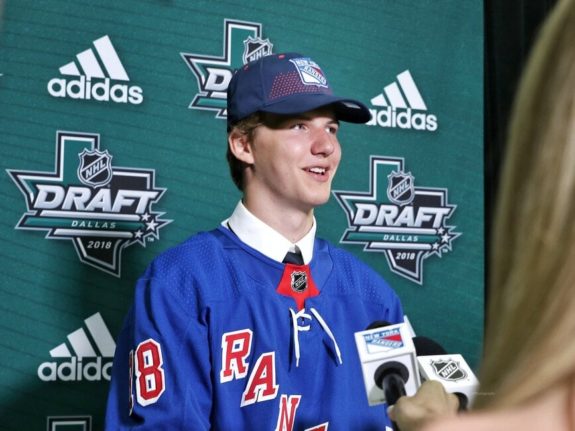
Yet as with Andersson, the Rangers missed a major mental makeup issue with the player. Kravtsov’s wander from the Rangers to the AHL, back to the KHL and back again left the impression of a young man who never seemed fully committed to making his game work in North America. Such a desire didn’t surface after a change of scenery, as Kravtsov showed little in 16 games with the Canucks. With a chance to put in the work over the summer to prove to Vancouver management that he was all-in on making in the NHL, Kravtsov instead bolted for the comforts of home, seemingly unlikely to return.
As with 2017, there’s at least one clear miss for the Rangers in the 2018 draft – their first after formally announcing their intention to undertake a rebuild – because of the gamble on Kravtsov. That would be Oliver Wahlstrom, like Kravtsov a right wing who was much better known because of his time in the U.S. National Development Program, where he flashed a scorer’s touch and played well in two world junior championships. Snapped up by the archrival New York Islanders two picks after Kravtsov, Wahlstrom was not happy the Blueshirts passed on him, saying they “made a mistake” in doing do.
Related: Rangers Must Balance Ensuring Success and Developing Talent
While Wahlstrom’s development has been gradual, his statement could already be regarded as correct. The 6-foot-2, 204-pounder would look pretty good right now on the Rangers’ destitute right side, where Kaapo Kakko appears to be among the few options to fill one of the four spots.
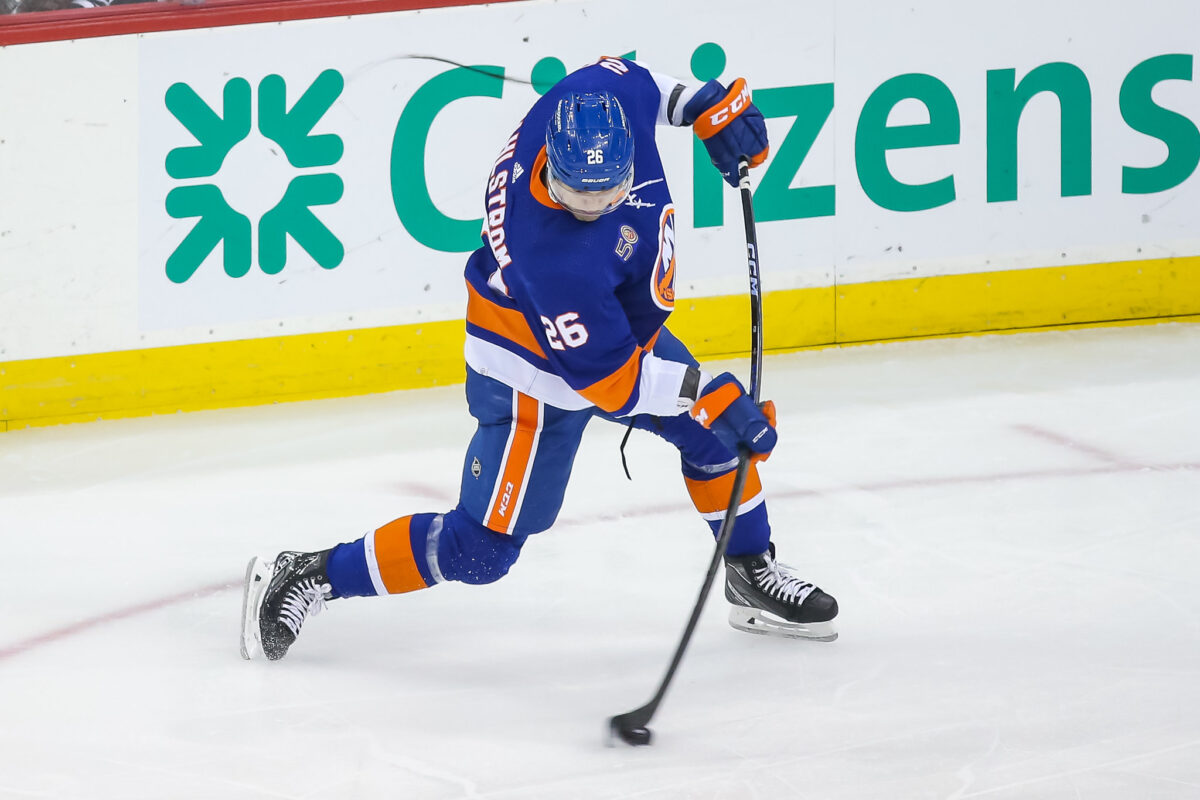
Wahlstrom played in only 35 games this season due to a knee injury, but recorded seven goals and nine assists. He had 13 goals and 11 assists in 79 games in 2021-22, and he could haunt the Rangers for some time from both the standpoint of the need he could have filled for them, along with having gone to the Blueshirts’ blood rival.
Rangers Missed Out on Franchise Cornerstones in Those Drafts
Again, every organization has mea culpas when it comes to the draft. Perhaps Gorton was betting on Kravtsov’s long-term potential, trying to hit a home run on a highly-skilled player who was available to the Rangers at No. 9. Yet the approach to the selections of Kravtsov and Andersson seems faulty. It’s hard to believe that the proper amount of due diligence was done on both players’ willingness to do the work required to go from well-regarded prospects to NHL regulars.
That has been costly, and is getting costlier all the time. Having missed on Andersson four years earlier, the club felt it needed to commit significant salary-cap space to shore up the center position in the summer of 2022; as a result, Trocheck’s $5.625 million cap hit is on the books through 2028-29, a contract that could become an albatross sooner rather than later. With Kravtsov not working out, Drury will also have to find help at right wing, with Vladimir Tarasenko and Patrick Kane likely to depart via free agency and no obvious replacements in the system.
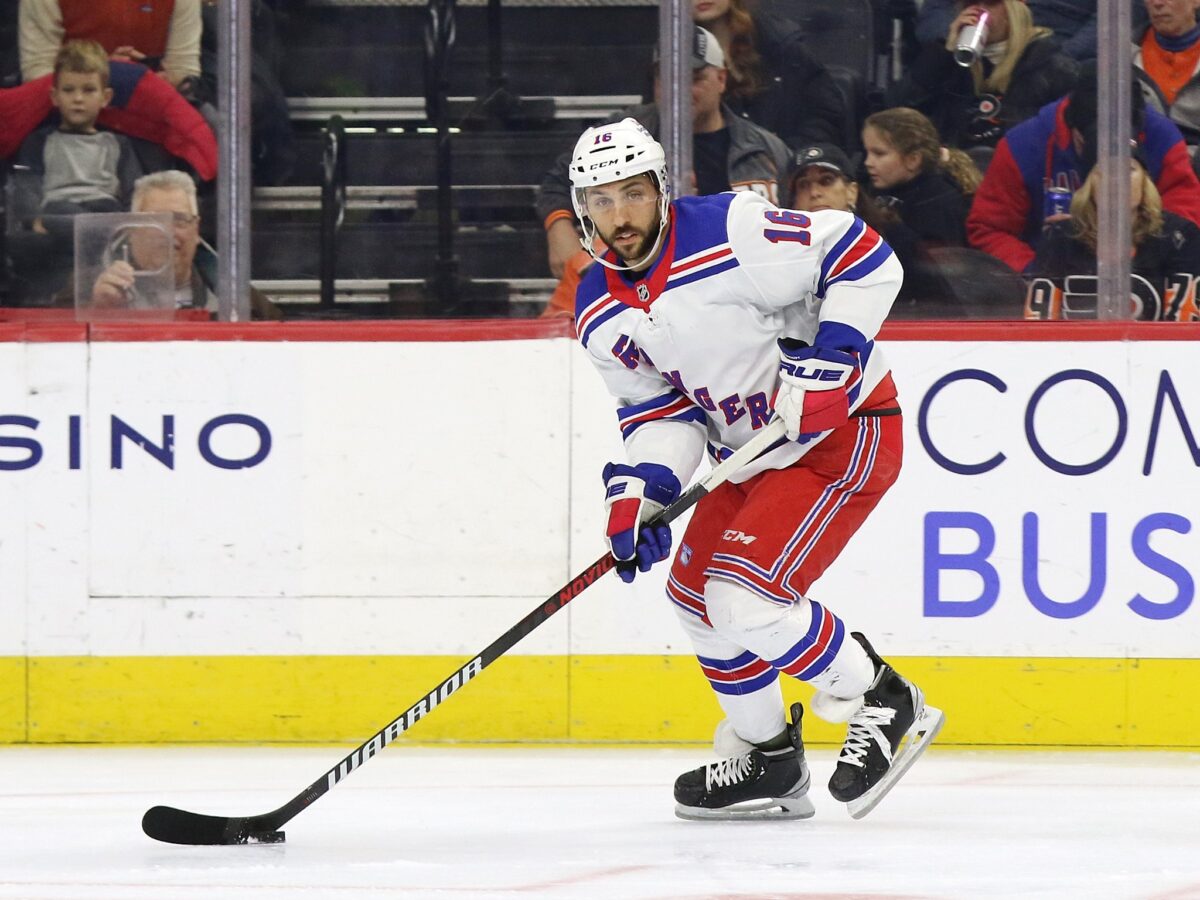
Player development has never been the Rangers’ strength, so it’s far from a certainty that Necas, Suzuki or Wahlstrom would have blossomed in Blueshirts. However, the club’s patience with Chytil and its young defensemen has been rewarded, so it’s entirely possible, maybe even probable, that any of those three passed-on players would have found the same levels of success in Rangers sweaters.
The stakes are high when it comes to the draft. Carolina and Montreal scored with what look like franchise cornerstones in 2017, and Wahlstrom is the type of improving prospect who could have helped fill a major hole in the Blueshirts’ roster next season. By gaining essentially nothing from those two high picks, Drury – who wasn’t in charge when Andersson and Kravtsov were selected – and the Rangers are paying the price, and may continue to do so well into the future.
